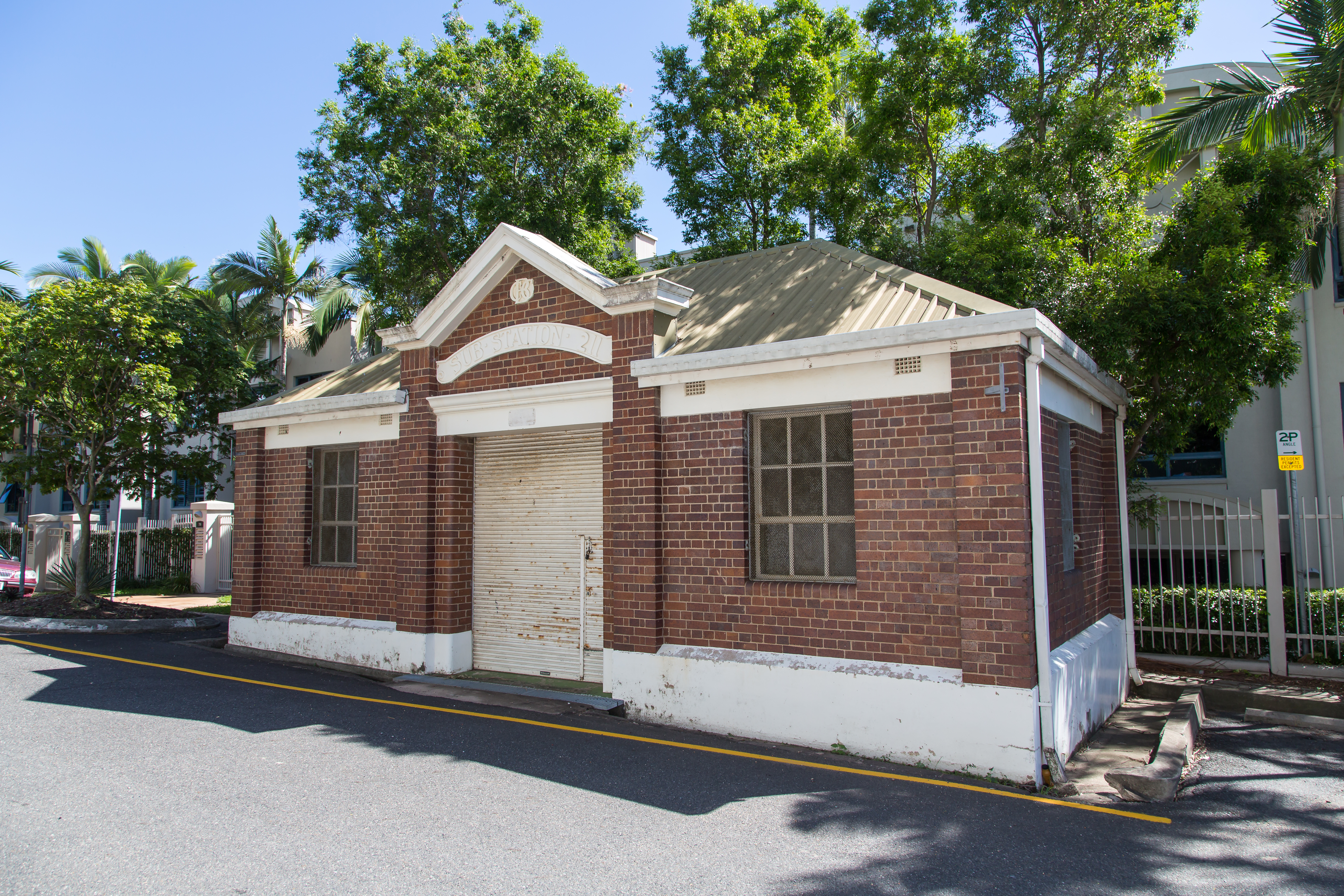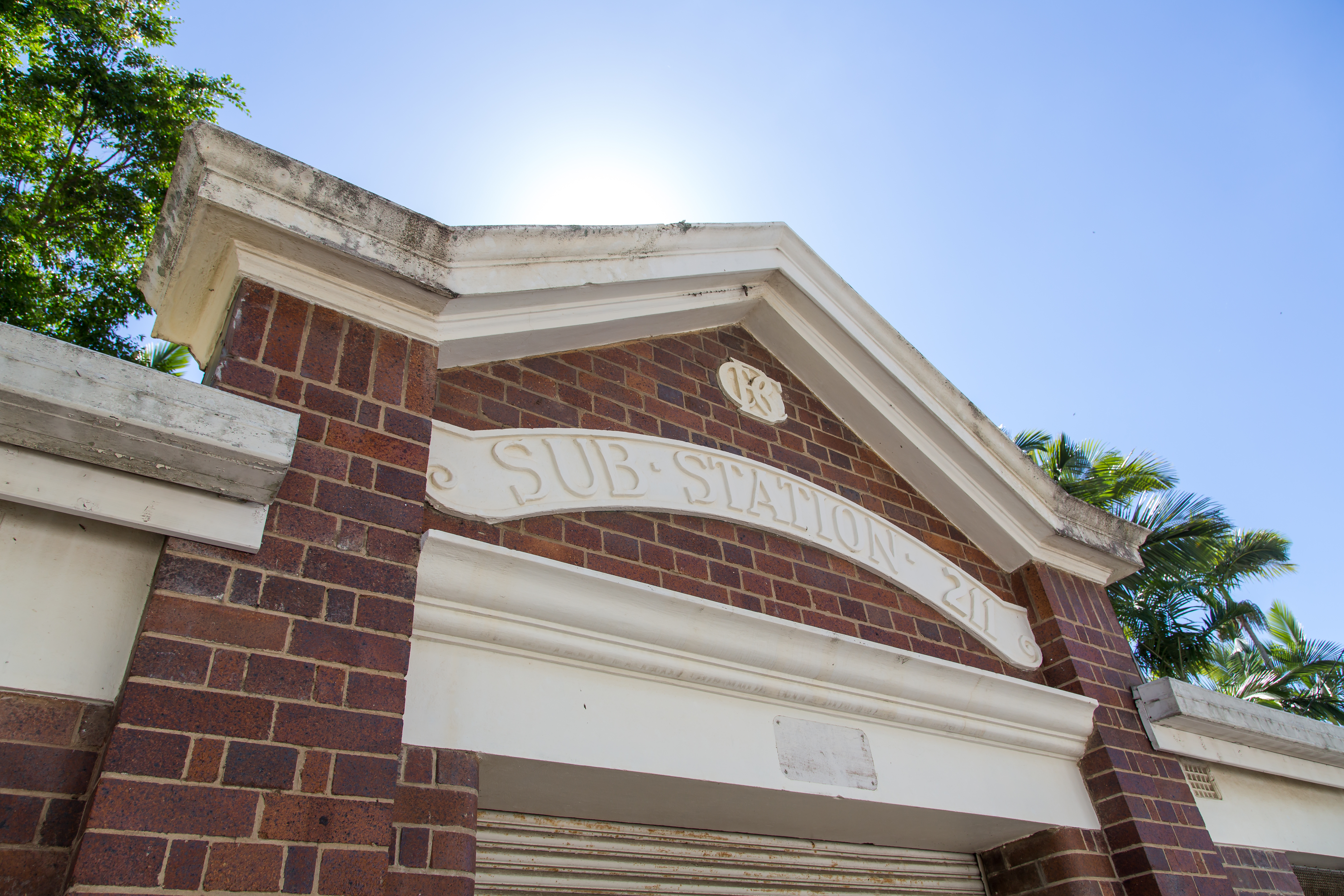Addresses
Type of place
Substation
Period
Interwar 1919-1939
Style
Free Classical
Addresses
Type of place
Substation
Period
Interwar 1919-1939
Style
Free Classical
Substation No. 11 was erected in 1928 as part of the Brisbane City Council’s commitment to supply electricity to the Greater Brisbane region. It was designed by the Greater Brisbane City Council’s first City Architect, Alfred Foster, who also designed a number of other substations throughout Brisbane. Substations were essential components for distributing an effective electrical service throughout the City for most of the twentieth century. Substation No. 11 was decommissioned in 1995.
Lot plan
L381_SL8851
Key dates
Local Heritage Place Since —
Date of Citation —
Construction
Roof: Ribbed metal;Walls: Masonry
People/associations
Alfred Herbert Foster (Architect)Criterion for listing
(A) Historical; (D) Representative; (H) Historical associationInteractive mapping
Lot plan
L381_SL8851
Key dates
Local Heritage Place Since —
Date of Citation —
Construction
Roof: Ribbed metal;Walls: Masonry
People/associations
Alfred Herbert Foster (Architect)Criterion for listing
(A) Historical; (D) Representative; (H) Historical associationInteractive mapping
History
Tenders were called for the erection of a substation, and by the closing date of 1 June 1928 nine tenders had been received. Amounts tendered for the construction varied from ₤953/10/0.1 By the end of the year the Electrical Department was able to report that “Four (4) new Brick Sub-Station Buildings have been erected (and) also one Wooden Building. Among those listed was Cairns Street…No.11.”2 Not all of these substations were operating by the end of 1928, as installation of switchgear had only been completed in two of the buildings, “while the remaining two are well in hand.”3
The design for the substation was completed by the prominent Brisbane City Architect A.H. Foster. Foster was appointed City Architect following the formation of the Greater Brisbane City Council in 1925 and served in this position until his death in 1932.12 He was responsible for such civic buildings as Kurilpa Library (1927) and Victoria Park gold clubhouse (1931). Foster also designed other substations including Gregory Terrace (1928), Lang Park (1928, demolished), Moorooka (1929), Hamilton (1929, demolished), and Coorparoo (1930). Foster was renowned for his distinctive brick buildings.3
In the Electricity Department Annual Report for the year ended 30 June 1935 it was announced that “Main Control Sub-stations are constructed of brick, and designed to harmonise with the class of buildings in the residential areas.”4
The Cairns St Substation played an important initial role in the supply of electric energy to the southern suburbs of Brisbane. These suburbs included Balmoral, Coorparoo, Stephens, Sherwood, and Yeerongpilly. It was also intended that electricity from this substation would also supply “Taringa and tie-feed to the north suburbs via Toowong.”5
By 1932 the need for duplicate cables across the river became apparent. It was reported that, “(T)this cable (between Merthyr Road and Cairns Street) has on two occasions been picked up by ships’ anchors and in the event of failure due to the stresses caused by interference the supply to the areas mentioned would be cut off.”6 To remedy this problem it was proposed to ultimately lay cables “between New Farm Power House and Goff Street (Norman Park).”6
Further cable laying, upgrading and replacement of electrical wiring and components occurred during the 1960s and 1970s. In 1988 the roof was replaced and in c.1995 the substation, having now been made obsolete, was decommissioned.7
Description
This small masonry building is symmetrical in design with a hipped iron roof and parapeted pediment over a wide access door to the centre of its front wall. The building is a standard Foster design, except for the omission of arched openings. The building’s face brick walls rise from a rendered plinth. They are thickened at the corners and each side of the main entry by piers. The walls are crowned by a rendered lintel. The building has nine paned casement windows and a large roller door within the main entry.
Originally clad in tiles the roof is now clad in ribbed metal sheeting. The building is otherwise unaltered from it’s original form which was designed to be in sympathy with surrounding residential development. Today it is somewhat stranded at the bottom of a dead end street next to high-rise development.
Statement of significance
Relevant assessment criteria
This is a place of local heritage significance and meets one or more of the local heritage criteria under the Heritage planning scheme policy of the Brisbane City Plan 2014. It is significant because:
References
-
Reports and Proceedings of the Municipal Council of the City of Brisbane During the Year 1928. 1st January to 31st December. (Brisbane; Shaw Printing Co Ltd, 1929). December p.259
-
“Brisbane City Council Electricity Supply Department,” Third Annual report 1928. P.9. in Ibid
-
Ibid
-
Donald Watson & Judith Mckay. Queensland Architects of the 19th Century; A Biographical Dictionary. (Brisbane: Queensland Museum, 1944). P.69
-
Thom Blake, Gerard Murtagh & BCC Heritage Unit. West End Library – Conservation Plan. A Report for the Department of Recreation and Health, Brisbane City Council. (Brisbane: BCC Pub, 1993). Pp. 13-14
-
Thom Blake, West End Library Conservation Plan. Pp. 13-14
-
Cited in Christopher William Osford-Fordan. A Study of the Architectural History of Brisbane Electricity Substations Before 1953. (Unpub Thesis, Bachelor of Architecture, University of Queensland, 1984)
-
Reports and Proceedings of the Brisbane City Council, During the Period 1st, July 1932 – 30th, June 1933. P.53
-
Ibid
-
Ibid
-
Conversation with Ray Brown of the SEQEB Museum. 1-2/10/96 by C.R. Robertson. Constant reference was made to SEQEB files
Citation prepared by — Brisbane City Council (page revised September 2020)



